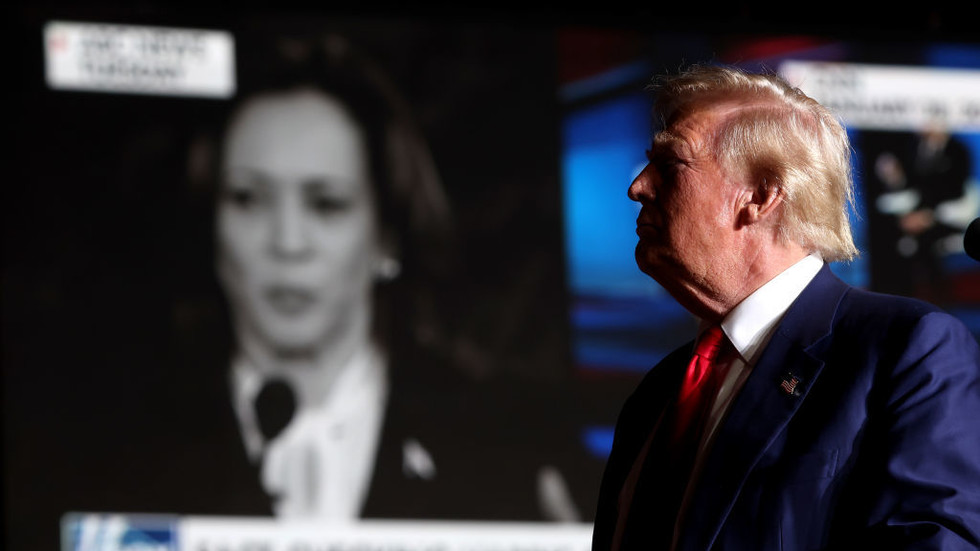In the lead-up to the upcoming US presidential election, a recent Wall Street Journal poll reveals a fiercely competitive landscape among voters in seven significant battleground states. The survey, which sampled 4,200 participants, indicates that Donald Trump and Kamala Harris are in a dead heat, with Harris holding a narrow lead in key states such as Arizona, Georgia, Michigan, and Wisconsin, while Trump shows an advantage in Nevada, North Carolina, and Pennsylvania. Notably, no leading figure has a margin greater than two percentage points, apart from Trump’s five-point edge in Nevada. Overall, Trump leads Harris slightly by 46% to 45% across all seven states, reflecting deep partisan divisions with overwhelming support from both Republican and Democratic voters, while independents noticeably lean towards Harris by a narrow margin.
The competitive nature of this election is underscored by the assertions of leading pollsters involved in the survey. Republican pollster David Lee emphasizes the significance of the remaining weeks until election day, highlighting the intense, neck-and-neck nature of the race. Similarly, Democratic pollster Michael Bocian acknowledges the closeness of the contest, noting that every vote will be vital. Recent polling trends corroborate the tightness, showing both candidates frequently within single digits of one another in these pivotal states, with Trump holding an overall edge apart from Wisconsin. The stakes are exceedingly high in these battleground areas; winning any combination of them could decisively influence the overall election outcome.
When assessing voter priorities, economic issues and immigration rank as the top concerns among participants. According to the poll, Trump is favored over Harris regarding economic matters, enjoying a 10-point advantage in this category. Additionally, voters express a strong preference for Trump regarding immigration and border security, where he leads by 16 points. While Trump excels in these critical areas, it is Harris who takes the lead on the issue of abortion, boasting a16-point advantage over Trump. This stark contrast in voter preferences illustrates the pivotal issues affecting the electorate, which could significantly sway the election results in favor of either candidate.
The comparison to the 2020 election adds further context to the current polls. At this stage in the previous campaign cycle, President Joe Biden had a comfortable five-point lead over Trump in critical states such as Michigan, Pennsylvania, and Wisconsin. Interestingly, the dynamics have shifted, as Trump previously won all three of these states in the 2016 election before losing them to Biden in 2020. This aspect of the electoral landscape is crucial; reclaiming these states would be a significant victory for either candidate and could effectively seal the deal for the presidency.
The demographic breakdown of the poll shows strong loyalty among party lines, with approximately 93% of Republican voters and 93% of Democratic voters supporting their respective candidates. This unyielding partisan alignment underscores the polarized nature of American politics today, with intensifying competition leading to deeply entrenched voter bases. The slim margins of support among independents—who constitute a critical voting bloc in battleground states—reveal that even slight shifts in sentiment could be enough to tip the scales in favor of one candidate or another.
As voters head toward the polls, the stakes could not be higher. With economic concerns and immigration dominating the discussion, and Harris’ notable lead on abortion, both candidates have significant appeal regarding particular issues. Given the extremely close nature of the race, the result in these battleground states will likely hinge on the candidates’ last-minute efforts to sway undecided voters and reinforce their bases. As history has shown, outcomes in these states can change dramatically in a short time, making the final weeks of the campaign critical as candidates prepare to vie for the presidency amid one of the most contentious electoral environments in recent memory.

